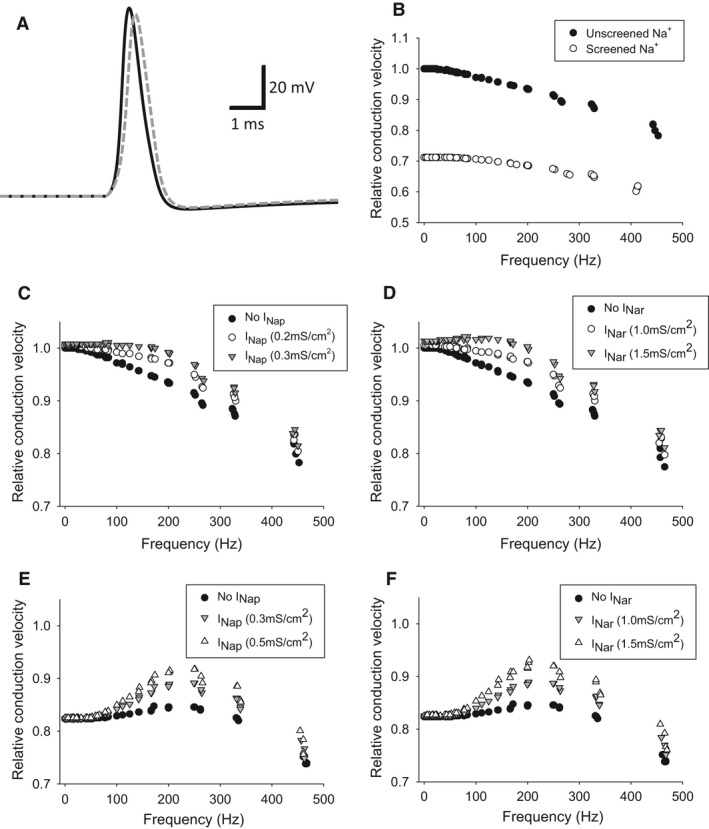Figure 7.

Sodium modulation of CV in a multicompartment model. (A) APs from a multicompartment model of the DCMD axon with (gray dashed) and without (black solid) transient sodium screening. An increase in rise time is clearly observed. (B) The multicompartment model shows a characteristic decline in CV at higher frequencies of up to ~20% (black symbols). Screening of the sodium current caused a decline in CV across all frequencies (open symbols). (C) The addition of the persistent sodium current or (D) resurgent sodium current with increasing maximal conductance increases the CV of higher frequency APs. (ED) Hyperpolarizing the resting membrane potential with a persistent or (F) resurgent sodium current caused an increase in CV of APs around the 200 Hz frequency band. Hyperpolarization was caused by shifting the leakage current's reversal potential to −70 mV. (B–F) Stimulation of the axon model was with a pattern similar to the DCMD's response to a looming visual stimulus. (C–F) Relative conduction velocities were made relative to the first AP's CV in the “No IN ap” condition in C.
